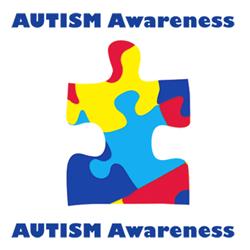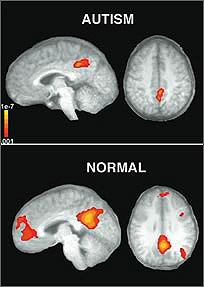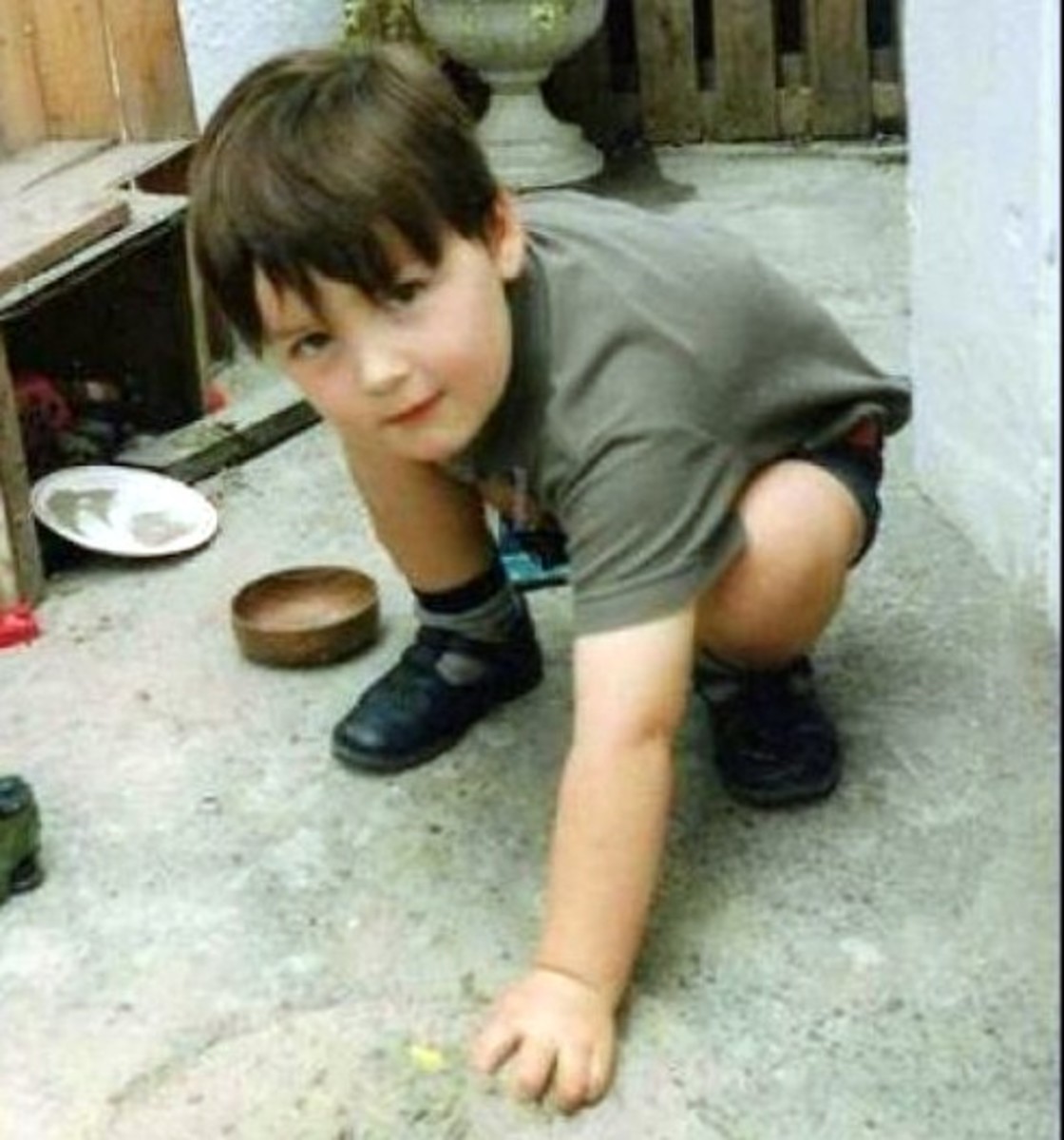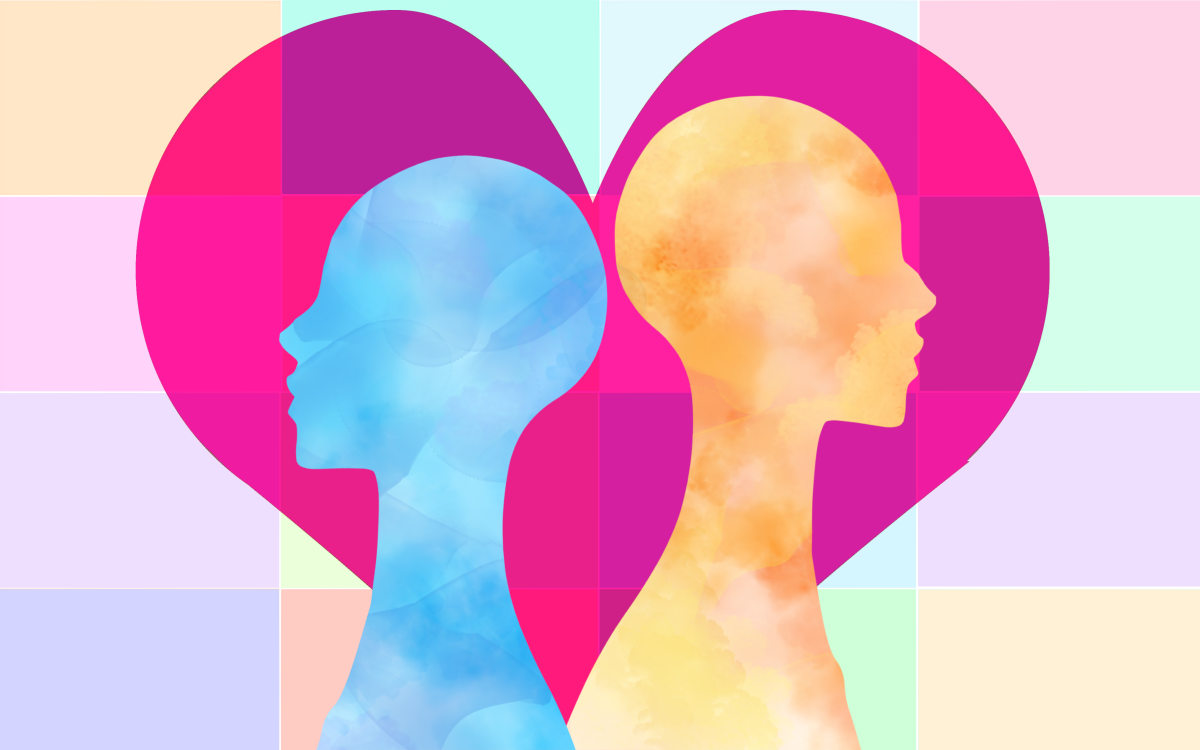How Autism Spectrum Disorders Affect the Learning Process
How much would you say you already know about autism?
What Is Autism
Autism Spectrum Disorders (ASDs) are characterised by, primarily, social dysfunction. The Diagnostic and Statistical Manual of Mental Disorders (DSM) also includes symptoms such as stereotyped motion, persistence in routines, sensitivity to sensory input, language delay and specific, intense interests (Baird 2003). Asperger’s disorder is the common name for a form of mild autism that does not include a language delay. It was thought of as a separate disorder but was recently redefined as an ASD. The study of Asperger’s, or mild autism specifically is important from a learning perspective, because they are more likely to be in an integrated classroom, and therefore present unique challenges.

Physicalities
Autistic brains are proven to be structurally different than neuro-typical (NT) brain. A study by Gillian Baird in the British Medical Journal showed that the development of the cerebral cortex was different in almost all cases, as was the cerebellum and inferior olive. The inferior olive was found to have far less Purkinje cells than a NT brain. Autistics were also found to have generally bigger brains. This is detectable very early in development, but the cellular causes aren’t yet known. Also unknown is whether the overgrowth of neurons is responsible for the symptoms of autism. There are several hypotheses about what is the connection is between overgrown neurons and autism symptoms, they are best explained by picturing city traffic. A NT brain is like a fairly crowded freeway, and the spaces between cars are like synapses. Sometimes the synapse is between different cars, sometimes it’s bigger, sometimes it’s smaller, but mostly everyone is calm and there is some regularity to it. Some scientists believe that the excess is causing over-connectivity in certain key brain regions, like a bad traffic jam in one spot that throws off the whole area, but extra throws off that spot. Others believe that the excess neurons get in their own way during migratory periods in early development, so like the traffic jam made everybody detour but now it’s too crowded on the side roads, and the usual road is getting less use, and still others think it throw off the balance of excitatory-inhibitory networks, so the extra cars (neurons) are making the stoplights malfunction or be ignored, which is causing trouble (Causes of Autism).

Purkinje Cells
Let’s break this down a bit more, Purkinje cells inhibit learning unnecessary information, so less Purkinje cells means less inhibition, which means more learning. So why aren’t all autistics geniuses? Well, there is a reason we evolved to block out unnecessary information, and that is partially because too much can be overwhelming, partially because we can’t possibly use all of it, and partially because if you are paying too much attention to something not important, you might miss something important. For a thought experiment, say two cavemen are sitting by a fire, and one, Tom, has normal Purkinje cells and one, Fred, has almost none. A bear approaches the fire. Tom runs away, screaming to Ted that there is a bear. Ted stares at a rock, marveling at its fissures and the glimmering bits of sand that stick to it, wondering what makes them like that. He flinches at Tom’s screaming, and the grating way it feels on his eardrums. Fred gets eaten. Tom’s Purkinje cells blocked enough input out that he could focus on only the most important input.
Serotonin
One of the things recently discovered about autism is that increased Serotonin is correlated, and quite possibly the cause of many symptoms (Veenstra-VanderWeele et. al. 2012).
Serotonin is responsible (as far as we know) for regulating most of our basic functions: sleep, sex, mood, hunger, temperature, and pain. Its job is to reduce these urges, to keep us from being too aggressive and impulsive. In a way, it is the satisfaction or that’s-enough neurotransmitter (Carlson 2011). Serotonin is found in the digestive system as well, and an excess of it there can cause stomach problems, which are known to be correlated with Autism, so while Veenstra-VanderWeele only tested for blood Serotonin, there could also be an imbalance in the digestive system.
In a study involving injecting baby mice with Serotonin, several ASD characteristics presented themselves. Mice with more Serotonin during development showed only half the vocalizations as the control group, disproportionate submissive behavior in a tube confrontation test, and increased head twitching. They also were observed to spend more time hanging from the cage. (Veenstra-VanderWeele et. al. 2012). These reactions are significant because they match a few of the behaviors that are connected to autism, like confrontation avoidance and social quietness due to not understanding what should be said. People with autism also have stereotyped repetitive motions, like a head twitch or rocking, and seek specific kinds of stimulation, like hanging could conceivably provide. What this means in the big picture is that Serotonin increase in autists isn’t just another symptom, it could be a cause of a number of related behaviors.
Mirror Neuron System
The mirror neuron system (MNS) theory of autism is the idea that the MNS and its mal-development in autistic children could be the cause of the social impairment which is central to autism. In a neuro-typical brain, the same neurons light up when the person watches someone do something as when the person copies the action. So imagine a baby that has no idea how to copy people. If you stick your tongue out at it a normal baby will stick out its tongue back, but a baby that can’t mimic will miss this first social milestone. For language development, what this means is that baby won’t start to make the sounds because you’re making them, but will probably wait until the sounds have real meaning to them and they have a purpose in saying them. This is why a huge part of an autism diagnosis is an early language delay, except in the mildest cases. Mirror Neurons are also a major component of empathy, whether it is simply flinching when someone gets hit in the privates, or the recognizing facial cues that indicate sadness and frustration and responding appropriately (Gluck, 2008). This theory of autism would explain most of the social behaviors and development but fails to recognize symptoms not related to social behavior, such as stereotyped motions and increased perception.
“Several studies have tested this hypothesis by demonstrating structural abnormalities in MNS regions of individuals with Autism Spectrum Disorder, delay in the activation in the core circuit for imitation in individuals with Asperger's, and a correlation between reduced MNS activity and severity of the syndrome in children with Autism Spectrum Disorder.”
(Causes of Autism)

Classroom Learning
So what does autism mean for classroom learning? Let’s start with Asperger’s, because it is more likely to be dealt with in a mixed class: that is with other neuro-typical (NT) students at the same time. The Organization for Autism Research gives a six step plan for managing Asperger’s students. The six steps are: educate yourself, reach out to the parents, prepare the classroom, educate peers and promote social goals, collaborate on the educational program development, and manage behavioral challenges.
The organization also gives some pro tips for in the classroom: Operate on “Asperger time,” manage the environment, create a balanced agenda, share the agenda, simplify language, manage change of plans, provide reassurance, and be generous with praise. Operating on Asperger time is just a reminder that an Asperger’s student is going to take a bit longer to do tasks. Manage the environment is a really important one, because Asperger’s students can’t filter out essential from non-essential input, so the pen clicking in the corner, the wasp flying into the window, the buzzing of the florescent lights and a plethora of other stimuli can be overwhelming or even painful. If there are too many of these things, the student will not hear a word you say. You wouldn’t expect a normal student to pay attention to the class if there was a circus in the room, so try to reduce the circus as much as possible. This is how the getting eaten by a bear thing applies to non-survivalist life, because the kids who can “see the bear” or pay attention to the lesson, only can because their Purkinje cells are blocking out the rest of the input. Create a balanced schedule means that in a mixed classroom, you can’t put all your effort into one group or the other. This is common sense but difficult, so it’s better to think up activities that everyone can do together but also have time to have Aspies and NTs do separate activities at the same time. Sharing the agenda is really important. This again relates to filtering essential and non-essential information, but beyond simple stimuli. So if a teacher tells a class, read the first unit and understand the main points, and write a list of five things you found new or interesting, the Aspie will never sleep. They will probably read the unit 5 times, trying to figure out which points are “main” enough and then will struggle with the five things because it will either all be new so they won’t know what to pick, or they won’t find anything interesting so they won’t know what to put. This goes neatly into “simplify language” because the way the teacher said it was too broad and too subjective. If they said instead, “I want you to understand the main ideas of unit one, so read through it once and for every bolded heading write a sentence on what it is about,” This states the agenda enough that an Aspie won’t wonder which things are important, and it has a definitive stopping point. Simplifying language is more than just speaking explicitly, it also pertains to sarcasm and multiple meanings. So if a mean teacher had an Asperger’s student and they asked which chapter we were supposed to read and the teacher said the whole book, assuming they would understand to ask another student, they would probably just read the whole book (6 Steps to Success for Asperger Syndrome 2010).
Eye Contact and Its Consequences
Another thing that throws a wrench in the learning process for Autistics is their avoidance of eye contact. An eye tracking study was done by T. Nakano and colleagues that revealed vital information about both normal development and autism. They took 4 groups, normally developed children and adults (NDC and NDA) and children and adults with autism spectrum disorders (ASDC and ASDA) and tracked their eye movements for several different kinds of images. One part of the study was a clip of a young girl smiling and announcing her name. A frame by frame analysis of the participant’s eye positions was done and it had astounding results. The NDA group looked almost exclusively at the girls eyes, the NDC group looked at her eyes while she was silent then her mouth when she spoke. This showed that A) there is a difference in adult and child brains in this area that causes children to look at the mouth, and that B) it is probably linked to language development, since a different study found that babies who look more at their mothers mouths developed language better (Young et al. 2009). The ASDC group looked at the girls face, but in a more spread pattern than NDC, and the ASDA group was looking all over the frame, with a few looking at the girl’s face. The most telling moment was when the girl said her name and it appeared on the bottom of the screen. This is when the NDC and NDA group were looking at her mouth and eyes respectively. Both ASDC and ASDA groups split about half and half between looking at the words and looking everywhere but the little girl’s eyes and mouth. The fact that so many looked at the words is even stranger because a lot of them couldn’t read, and some couldn’t speak so really what they were looking at was a novel, non-human shape. This could be because of the Purkinje cells again, and the difficulty in ignoring novel stimuli that it presents, but it could also follow the MNS Theory and be because the ASD groups wouldn’t be getting as much out of the image as the ND groups would, so naturally when something new, with more understanding potential than the human face, presents itself, it will have more draw. It could also be a mental, internal excuse to look away from the girl, as several accounts from (admittedly not provably) autistic people on the anonymous forum of reddit say it is uncomfortable almost to the point of pain to maintain eye contact. One user, /u/KillTheInc said eye contact was like “looking into the sun; you're capable of doing this for a little bit, but it starts to get extremely, extremely uncomfortable (in a mental way, instead of a physical way). All I know is I want to look away as fast as possible (So tell me... 2015)” So in cases like these it might not be distraction, but deliberate avoidance.
This small behavior has powerful consequences. It cannot be stressed enough how important social learning is to human existence, and when you are not simply not noticing, but avoiding the kind of input that is very likely to be instrumental in the development of one of your most valuable resources, other people, it can cause serious disadvantage.
The Bright Side
Autism is not all bad though, in fact, in some cases it is amazing. Paul Dirac, a mathematician and theoretical physicist of the 20th century, was one of the greatest geniuses of all time, Einstein himself said he walked “the dizzying path between genius and madness”. Dirac’s biography, The Strangest Man has enough anecdotes and descriptions of how he was that modern psychologists can say with assurance that he was autistic. With pencil and paper alone, Dirac put his name in the history books with the Dirac equation, which implied the existence of antimatter three years before it was discovered or even thought of (Silberman 2015). The reason Dirac could do these things is his autism, the genius and the autism here are not distinct. One of the traits of autism is hyper-specialized interests, Dirac got lucky and specialized in the right thing from the beginning, and from there he flourished. Without his brain putting much effort into things like parties, or dating, or casual conversation, he had extra brain space for science. With his Purkinje cells not blocking out extraneous information, he noticed things others didn’t and he learned faster. The literal way he thought- he described his own mind as “geometrical”- drove him to explain the world around him in more precise terms than existed before. Without the autism driven brain he was born with, he could not have accomplished most of the things he did.
Citations
Baird, G., Cass, H., & Slonims, V.. (2003). Diagnosis Of Autism. BMJ: British Medical Journal, 327(7413), 488–493. Retrieved from http://www.jstor.org/stable/25455385
Beckett, C., Maughan, B., Rutter, M., Castle, J., Colvert, E., Groothues, C., … Edmund J. S. Sonuga-Barke. (2006). Do the Effects of Early Severe Deprivation on Cognition Persist into Early Adolescence? Findings from the English and Romanian Adoptees Study. Child Development, 77(3), 696–711. Retrieved from http://www.jstor.org/stable/3696555
Carlson, N. (2011) What is Serotonin and What Does It Do? Retrieved November 27, 2015 from
CAUSES OF AUTISM. (n.d.). Retrieved November 28, 2015, from http://www.autism- help.org/autism-causes-detailed.htm
Gluck, M., & Mercado, E. (2008). Learning and memory: From brain to behavior. New York: Worth.
Hoksbergen R, ter Laak J, Rijk K, van Dijkum C, Stoutjesdijk F (2005). "Post-Institutional Autistic Syndrome in Romanian adoptees". J Autism Dev Disord 35 (5): 615–23. doi:10.1007/s10803-005-0005-x. PMID 16167089.
Nakano, T., Tanaka, K., Endo, Y., Yamane, Y., Yamamoto, T., Nakano, Y., … Kitazawa, S.. (2010). Atypical gaze patterns in children and adults with autism spectrum disorders dissociated from developmental changes in gaze behaviour. Proceedings: Biological Sciences, 277(1696), 2935–2943. Retrieved from http://www.jstor.org/stable/2786240
Silberman, S. (2015). V. In NeuroTribes: The legacy of autism and the future of neurodiversity.
Slykhuis, D. A., Wiebe, E. N., & Annetta, L. A.. (2005). Eye-Tracking Students' Attention to PowerPoint Photographs in a Science Education Setting. Journal of Science Education and Technology, 14(5/6), 509–520. Retrieved from http://www.jstor.org/stable/40186731
Szpir, M.. (2006). Tracing the Origins of Autism: A Spectrum of New Studies. Environmental Health Perspectives, 114(7), A412–A418. Retrieved from http://www.jstor.org/stable/3651756
So tell me about eye contact and why it disturbs you. • /r/aspergers. (2015). Retrieved
December 3, 2015, from https://www.reddit.com/r/aspergers/comments/2rshii/so_tell_me_about_eye_contact_and _why_it_disturbs/
Veenstra-VanderWeele, J. et al (2012). Autism gene variant causes hyperserotonemia, serotonin receptor hypersensitivity, social impairment and repetitive behavior. Proceedings of the National Academy of Sciences of the United States of America. doi:10.1073
Young, G. S., Merin, N., Rogers, S. J. & Ozonoff, S. 2009 Gaze behavior and affect at 6 months: predicting clinical outcomes and language development in typically developing infants and infants at risk for autism. Dev. Sei. 12, 798-814. (doi:10.1111/j.1467-7687.2009. 00833.x)
6 Steps to Success for Asperger Syndrome. (2010). Retrieved December 3, 2015, from http://www.researchautism.org/educators/aspergersteps/index.asp








